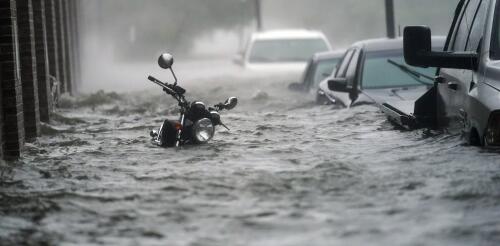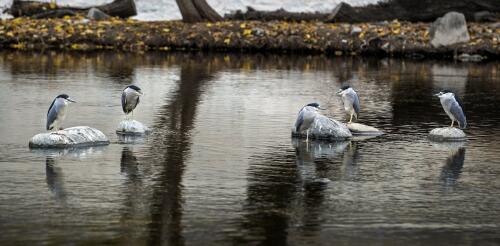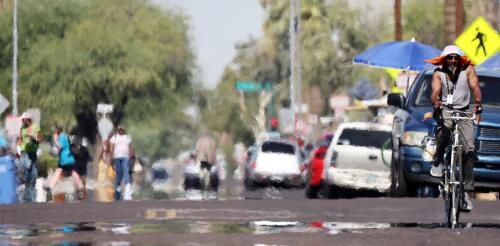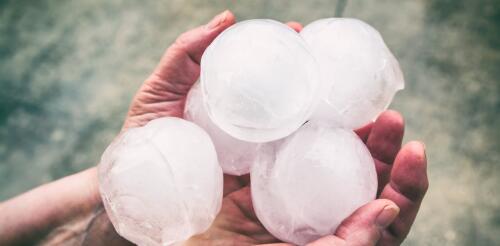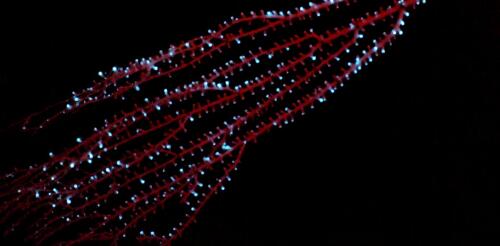environment
Ocean-related tourism and recreation supports more than 320,000 jobs and US$13.5 billion in goods and services in Florida. But a swim in the ocean became much less attractive in the summer of 2023, when the water temperatures off Miami reached as high as 101 degrees Fahrenheit (37.8 Celsius). The future of some jobs and businesses across the ocean economy have also become less secure as the ocean warms and damage from storms, sea-level rise and marine heat waves increases. Ocean temperatures have been heating up over the past century, and hitting record highs for much of the past year, driven primarily by the rise in greenhouse gas emissions from burning fossil fuels. Scientists estimate that more than 90% of the excess heat produced by human activities has been taken up by the ocean. That warming, hidden for years in data of interest only to oceanographers, is now having profound consequences for coastal economies around the world. Understanding the role of the ocean in th...
The Earth is losing animals, plants and other living things so fast that some scientists believe the planet is entering its sixth mass extinction. But there’s some surprising good news: Urban areas may be key to slowing down or even reversing this crisis. This idea may seem counterintuitive, since studies show that urbanization is a big driver of biodiversity loss. Cities alter the environment with artificial lighting and noise pollution, which affect many species. And urban land cover is expected to increase by 2.5% globally between 2000 and 2030 as more people move to cities. As one measure of urbanization, half of the continent of Europe is less than 1 mile (1.5 kilometers) from a roadway or railway line. No location on the continent is more than 6 miles (10 kilometers) from these features. But there are ways for cities to use nature-based solutions to slow species loss within their borders. At a major international conference on biodiversity loss in 2022, global lead...
You’ve probably heard people say, “It’s not the heat, it’s the humidity.” There’s a lot of truth to that phrase, and it’s important to understand it as summer temperatures rise. Humidity doesn’t just make you feel sticky and uncomfortable – it also creates extra dangerous conditions on hot days. Together, too much heat and humidity can make you sick. And in severe cases, it can cause your body to shut down. Meteorologists talk about the risk of heat and humidity using the heat index, but it can be confusing. I’m a risk communication researcher. Here’s what you need to know about the heat index and some better ways meteorologists can talk about the risks of extreme heat. Outdoor workers can be at high risk of heat illnesses. Robert Gauthier/Los Angeles Times via Getty Images What is the heat index, and how is it measured? Heat index...
Hail the size of grapefruit shattered car windows in Johnson City, Texas. In June, 2024, a storm chaser found a hailstone almost as big as a pineapple. Even larger hailstones have been documented in South Dakota, Kansas and Nebraska. Hail has damaged airplanes and even crashed through the roofs of houses. How do hailstones get so large, and are hailstorms getting worse? As an atmospheric scientist, I study and teach about extreme weather and its risks. Here’s how hail forms, how hailstorms may be changing, and some tips for staying safe. How does hail get so big? Hail begins as tiny crystals of ice that are swept into a thunderstorm’s updraft. As these ice embryos collide with supercooled water – liquid water that has a temperature below freezing – the water freezes around each embryo, causing the embryo to grow. A hailstone cut in half, which reveals layers of clear and cloudy ice formed as the hailstone journe...
Humans have long been fascinated by organisms that can produce light. Aristotle, who was a scientist as well as a philosopher, wrote the first detailed descriptions of what he called “cold light” more than 2,000 years ago. More recently, pioneering researchers like World War II Army veteran Emmett Chappelle and deep submergence vehicle pilot Edith Widder advanced the study of this phenomenon with novel technologies. At least 94 living organisms produce their own light through a chemical reaction inside their bodies – an ability called bioluminescence. Examples include luminous fireflies, algae that create “glow-in-the-dark” bays, small crustaceans with intricate courtship displays, and deep-sea fish and coral. Yet despite its widespread occurrence, scientists don’t yet know when or where it first emerged, or its original function. As marine biologists who specialize in deep-sea habitats, we know that bioluminescence is particularly common i...
